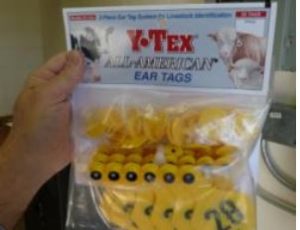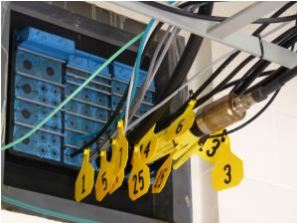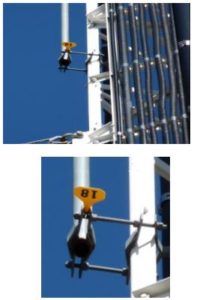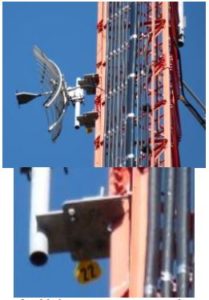Keeping Track of all those Coax Lines

[March 2013] Documentation is the basis for any good maintenance program. Troubleshooting is much easier when the engineer does not have to stop and trace wires and coax before working on the real problem. Here is a tip on a way to make the process easier and clearly identify components.
At simple AM or FM sites, where you basically find only a single transmitter line – and perhaps an STL antenna – on your tower, keeping track of the transmission lines going in and out of the building is a relatively easy task.
On the other hand, larger tower sites with multiple antennas and their related multiple lines can often present a considerable challenge in keeping track of the various pieces of coax and conduits running from the building up the tower.
Then there is the worst-case scenario, over a period of time any number of tower users come and go, antennas are installed and removed, etc., and the transmission site is left with what often turns out to be a collection of undocumented antennas and lines.
What Number is That Line?
I have seen a number of efforts to keep track of this issue. Most of them involve placing tags of some sort on the transmission lines at the building entrance panel – and occasionally at the other end of the line near the antenna.
In some cases these are metal tags, specially designed to withstand the elements etc.
The problem with most of these systems is that you cannot read the label at the upper end of the line without having someone climb the tower.
Recently, while visiting a local tower I observed a unique solution that I feel compelled to share.
In this case, the tower owner, Greg Owens, was clearly thinking outside the box and came up with a unique solution from an unusual source.
A Moo-Ving Solution
Owens visited his local farm supply store and picked up a couple of bags of – Cow Tags.
If you have cattle in your area, take a look and you will see transmission line tags on the hoof! These tags are attached to the cows’ ears and provide a long-lasting means of telling which cow is which.

A bag of Cow Tags
These tags withstand weather, UV rays, etc. And here is the best part: they are economical.
Economical And Easy to See
I do not yet have data to know how long these tags will last on a tower. However they are priced so that if replacement is required, it will not break the bank – and can be done during routine inspections etc.
In this application the tag is easily attached by a clamp around the transmission line.

The transmitter room egress is a good point to place line numbering
At the upper end, you can attach them to the coax or even the antenna bracket using stainless hardware and washers.

In the two pictures above, it is easy to tell which antenna is the destination for line number 18

And it is easy to see exactly where line number 22 ends up!
As you can see, the cool part is that they are easy to read. Positioned correctly, the tags can be read, using field glasses, even when they are several hundred feet above the ground.
Whether at the transmitter site or at the studio for the STL tower, this is a great way to know for sure exactly which line goes where.
– – –
Clay Freinwald has been working in radio and TV broadcast engineering in the Seattle area for approaching 52 years, caring for everything from studios to high-powered AM and FM transmitting plants.
In his spare time, Clay is an EAS evangelist and the Chairman for the Washington State EAS SECC.
You can email Clay at k7cr@blarg.net
